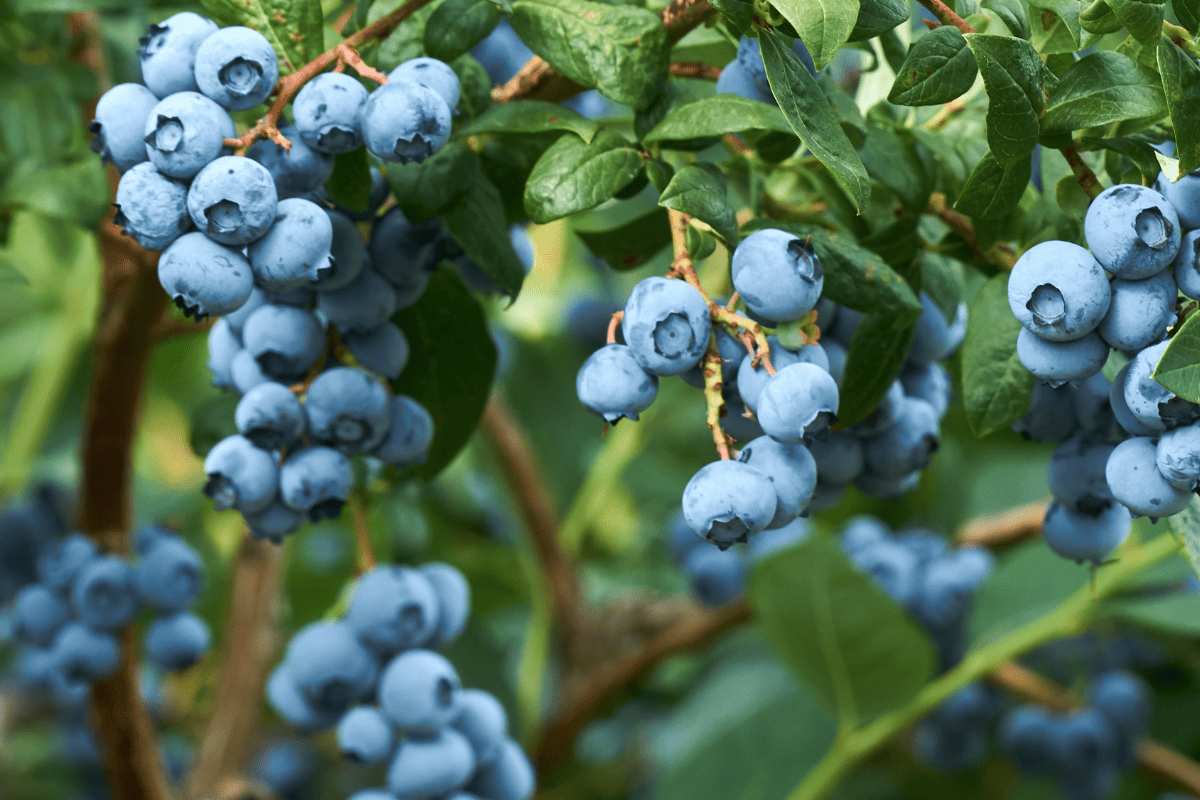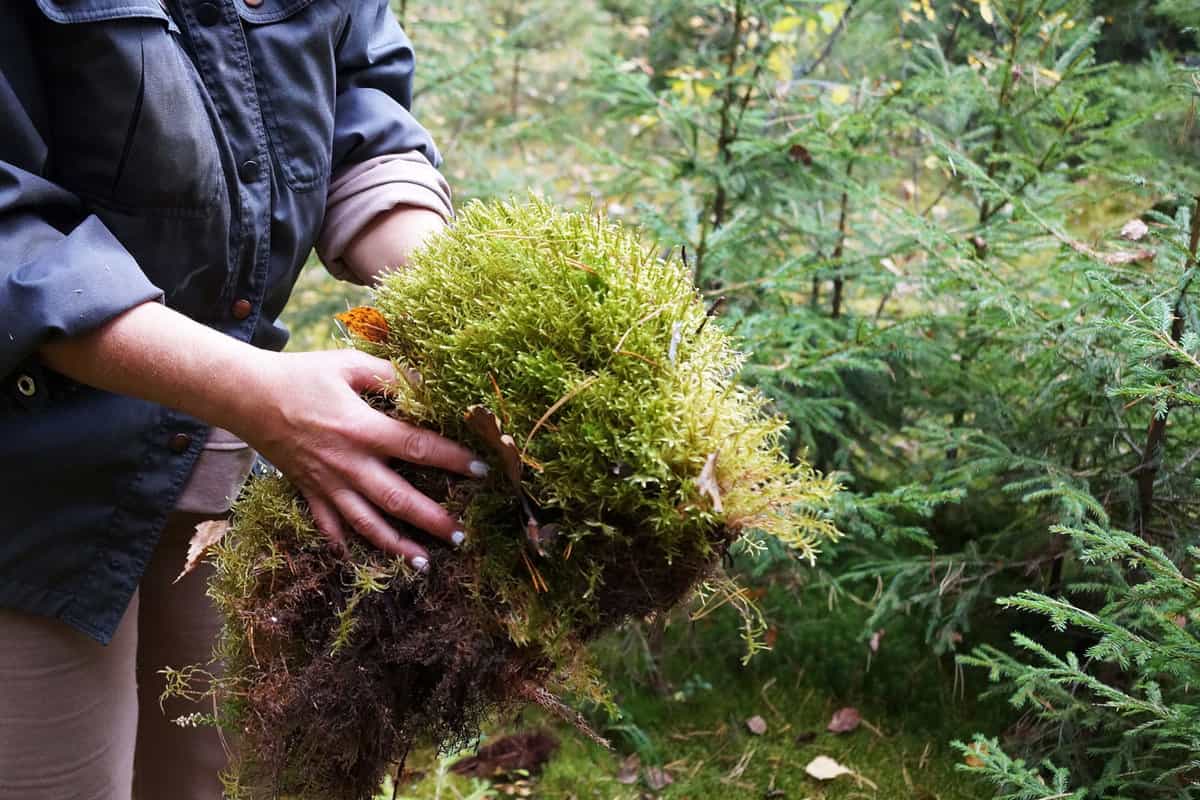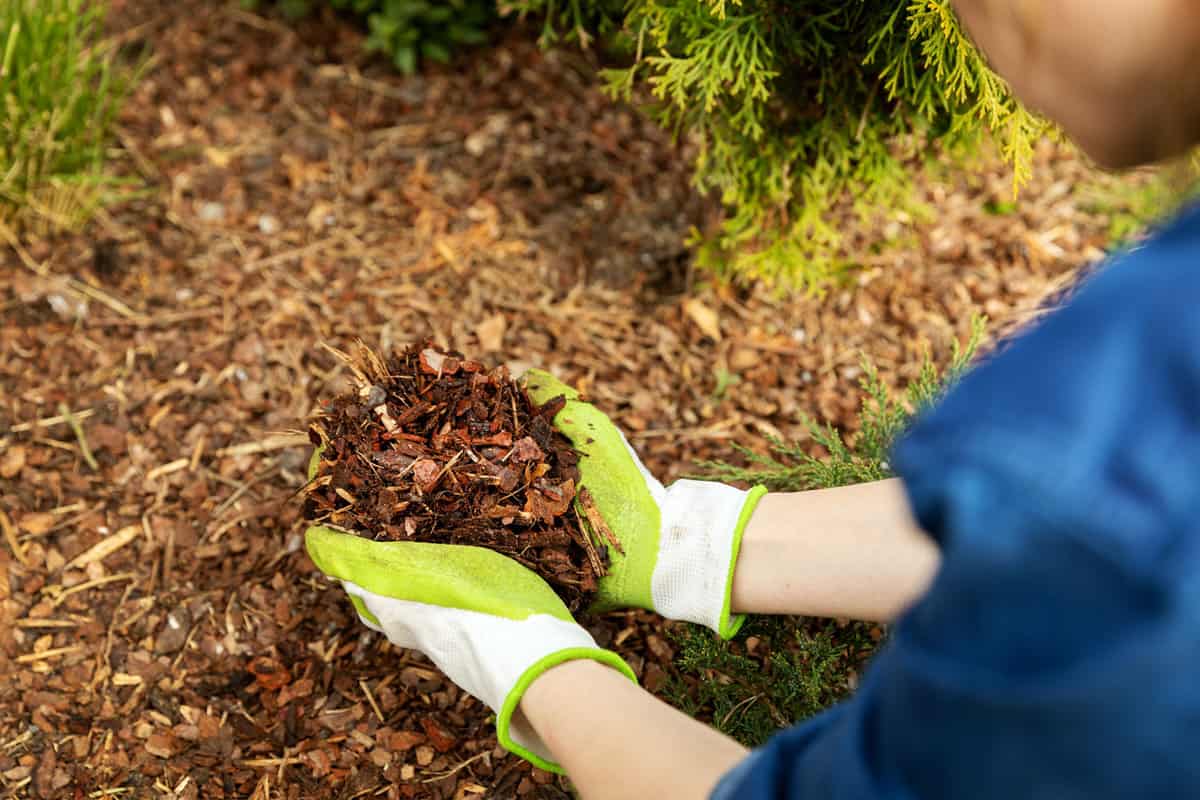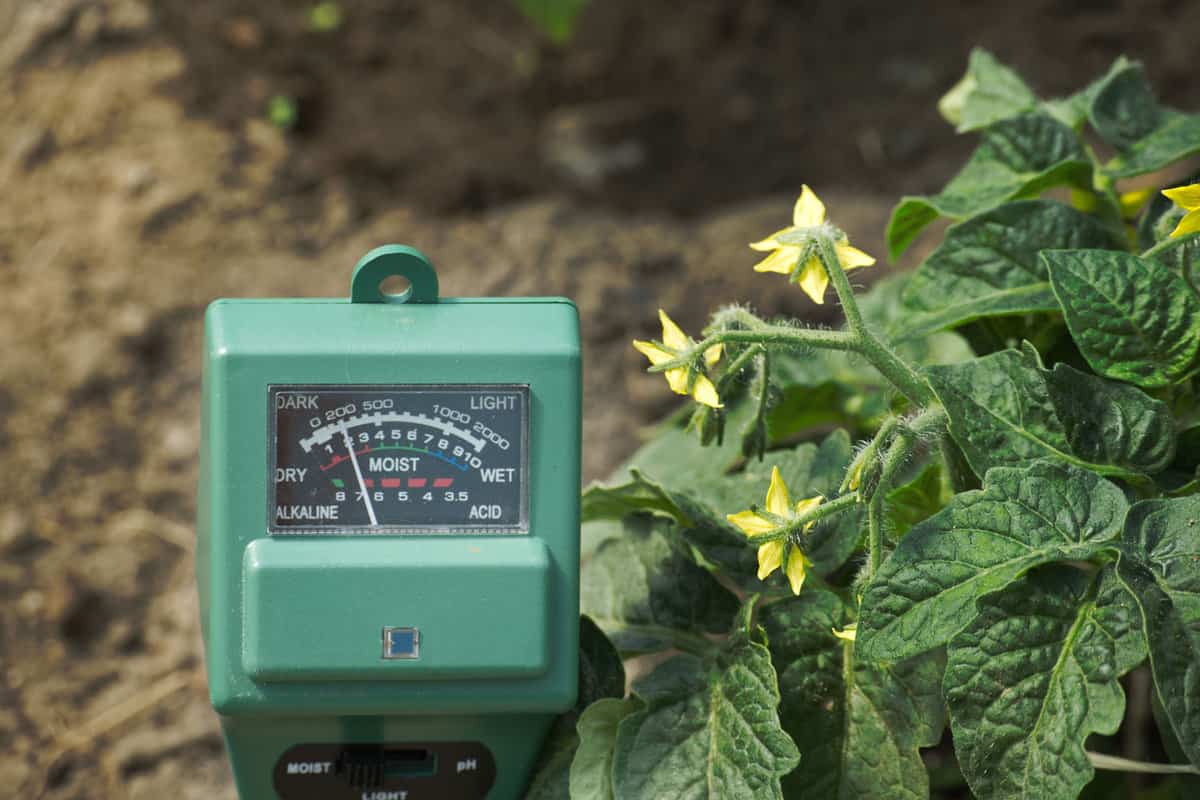Blueberries require acidic soil to grow, and achieving the ideal pH level for these plants is crucial for a successful harvest.
There are several ways to make the soil more acidic for blueberries, including incorporating organic matter and using chemical amendments.
By following these guidelines and monitoring your soil's pH levels, you can create the perfect environment for blueberries and enjoy a bountiful harvest.
Test your soil before making any adjustments so that you know exactly what needs to be done to achieve the desired acidity.
Understanding Soil pH and Blueberries

Blueberries require specific soil conditions to thrive, and one key factor is the soil pH. Soil pH is the measure of acidity or alkalinity of the soil.
It is measured on a scale from 0 to 14, with values below 7 indicating acidic soil and values above 7 indicating basic or alkaline soil.
To provide the best environment for your blueberries, it is important to understand and adjust your soil pH as needed.
Perform a soil test before amending the soil to check the existing pH level and get accurate recommendations for the required amount of amendments.
Lastly, remember that blueberries also require well-draining soil with a decent amount of organic matter.
Combining the right soil pH with other suitable conditions will lead to the successful growth of your blueberries and a delightful harvest.
Related: 15 Essential Facts About Soil pH: Unlock Your Garden’s Full Potential
Best Ways To Make Soil Acidic
Blueberries thrive in acidic soil, and there are several ways to adjust your soil's pH to meet their needs.
1. Using Acidifying Amendments
Use acidifying amendments like elemental sulfur or aluminum sulfate. These substances can be mixed into your soil to lower its pH quickly.

Follow the recommended application rates and monitor your soil's pH regularly to ensure you're achieving the desired acidity level for your blueberries.
Another effective method for lowering soil pH is to incorporate sulfur into the soil. Elemental sulfur reacts slowly with the soil, so it should be added a year before planting blueberries.
Incorporating sulfur allows time for soil microbes to break it down into sulfuric acid, which then contributes to lowering the pH.
When attempting to change soil pH, avoid using aluminum sulfate. Although it can lower soil pH, it may lead to aluminum toxicity, which can harm both the plants and the environment.
2. Applying Liquid Acidifiers
For a more controlled method, consider applying liquid acidifiers like vinegar or citric acid to your soil. Mix these substances with water and carefully apply them to the planting area.

Be cautious when using liquid acidifiers to avoid over-acidifying your soil. Test the pH frequently to keep it within the optimal range for blueberries.
You might also like: Vinegar In Soil: How Long Does It Last?
3. Adding Organic Materials
Incorporating composted leaves into your soil can gradually lower the soil pH, making it more hospitable for blueberries.

Mix this organic material evenly with the existing soil to ensure a consistent pH level throughout the planting area.
One way to lower soil pH is by adding sphagnum peat moss to the soil. This organic matter not only adds acidity to the soil but also helps improve its structure, making it a suitable option for home gardeners.
4. Utilizing Mulching Techniques
Lastly, employing mulching techniques can also help make your soil more acidic.

Using acidic materials like pine bark as a mulch layer around your blueberries not only helps to maintain soil moisture and suppress weed growth, but it also helps to gradually acidify the soil as the mulch decomposes over time.
Achieving the Right pH Level
Blueberries thrive in acidic soil, with pH levels ranging from 4.0 to 5.5. To ensure their optimal growth and nutrient absorption, adjust the soil pH as needed.
Here are some effective ways to make the soil more acidic for blueberries.

One common method to lower the pH level is to use elemental sulfur. The amount applied depends on the current pH of the soil and the desired level.
For example, if the starting pH is 7.4 and the target is 5.5, around 1 1/3 to 2 lb. (2 3/4 to 4 cups) of elemental sulfur per plant would be required.
It takes time for sulfur to break down and change the pH level, so it's best to apply it in advance before planting.
Another option is applying aluminum sulfate to the soil. This is a faster-acting alternative to elemental sulfur, but it needs to be used with caution.
Excessive aluminum may affect plant growth or pose environmental concerns. The recommended dosage is between 8–12 lb. (16–24 cups) of aluminum sulfate per plant, depending on the initial pH.
Incorporating organic matter such as peat moss or composted leaves can also contribute to a more acidic environment.
These materials slowly decompose and release acidic compounds, thereby lowering the pH level over time.
However, they may not create a significant change and might be better utilized in combination with sulfur or aluminum sulfate.
Lastly, mulching can benefit in maintaining the desired pH level. Apply a 2-4 inches thick layer of organic mulch, like pine bark around blueberry plants.
These materials are acidic in nature and can help maintain the acidity as they break down slowly.
Monitoring and Maintaining Soil pH
Regularly monitor and maintain the soil pH to ensure optimal growth and fruit production.
Here are a few friendly tips to help you achieve the perfect soil pH for your blueberries.

To start, perform a soil test to determine the current pH level. This provides the necessary information to take corrective measures if needed.
Soil testing kits are available at gardening stores and online, or you can send a soil sample to a professional lab.
Click here to see this soil test kit on Amazon.
Once you know the pH level, you can take appropriate steps to adjust it. If the soil is too alkaline, you can use acidifying amendments like elemental sulfur or aluminum sulfate.
Apply them according to the manufacturer's instructions and the soil test recommendations. Additionally, organic materials like peat moss and compost leaves can also help lower soil pH.
Regularly monitor the soil pH throughout the growing season by testing it every few months.
This enables you to detect any changes and make adjustments as needed. Keep in mind it may take time for the soil to reach the desired acidity level, and patience is key.
Mulching the blueberry plants with an acidifying mulch, such as pine bark, can help maintain the soil pH within the desirable range.
Lastly, make sure to provide your blueberries with an acid-forming fertilizer compatible with acidic soil requirements.
A slow-release, acid-forming fertilizer will ensure consistent nutrient availability during the growing season. Apply fertilizers according to the package directions and soil test recommendations.
In Closing
Creating the ideal acidic soil for blueberries can be achieved with a few simple steps. First, start by testing the soil pH to determine the current acidity level. Blueberries thrive best in soil with a pH between 4.0 and 5.5.
Adjust soil ph before planting sensitive plants like blueberries. This way, the plants can establish themselves in an environment suitable for their growth from the beginning.
Monitor the soil pH regularly and make necessary adjustments as needed to maintain the ideal conditions for blueberry growth.
This diligent care will help blueberries thrive and produce delicious, antioxidant-rich berries for years to come.

